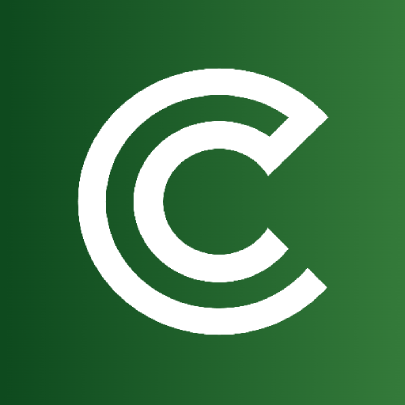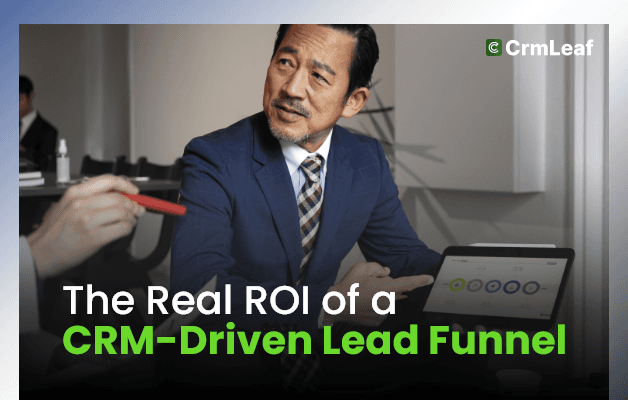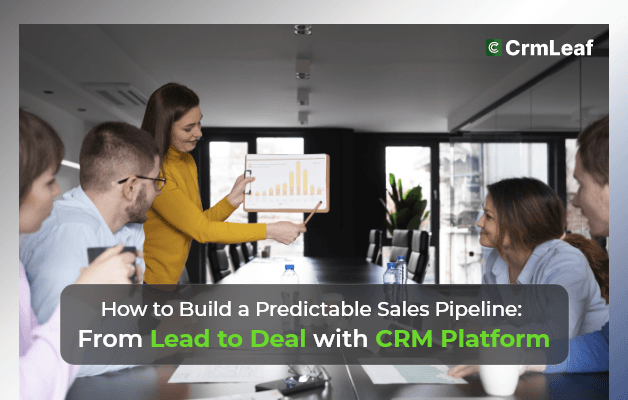More Leads is not More Revenue — Unless You Know Who to Prioritize! You’ve launched successful campaigns, generated a stream of inbound leads, and filled up your CRM system. Sounds great, right? Not always. According to Gleanster Research, only 25% of leads are legitimate and should move on to sales. The rest can clog your pipeline, waste your team’s time, and deflate your ROI. That’s where lead scoring changes the game.
In this blog, we’ll unpack what lead scoring is, why it’s critical for growing businesses, and how to implement it using CRMLeaf’s all-in-one platform that combines customer relationship management, human resource software, and payroll services for small businesses. Whether you’re in tech, logistics, human resource management, or professional services — you’ll learn how to spot the leads that deserve your time and convert them faster.
Why Lead Scoring Matters for Small & Mid-Sized Businesses
Every lead looks promising at first. But without a system to rank and prioritize them, your sales team ends up chasing the wrong opportunities — and missing the right ones. For scaling businesses, this isn’t just inefficient — it’s expensive.
Lead scoring is the process of assigning values to leads based on how well they match your ideal customer and how engaged they are. This helps your sales and marketing teams align, focus on qualified prospects, and move faster on high-converting leads.
Increased Sales Productivity
Sales reps can work smarter using integrated customer relationship management software, which allows for visibility into employee profiles, lead activity, and prospect engagement.
Marketing Optimization
With CRMLeaf’s all in one HR software, marketing teams can analyze which campaigns are generating the most qualified leads, based on score and interaction, and refine their strategy accordingly.
Better Forecasting & Revenue Visibility
Using a centralized human resource management system integrated with sales data improves decision-making and financial forecasting.
Cross-Team Alignment
Whether your team is managing attendance software, payroll services, or sales leads, CRMLeaf keeps everyone on the same page by combining document management, scoring models, and communication tools in one platform.
Industry Examples:
- SaaS Companies use lead scoring and document control software to target tech decision-makers who engage with technical specs or legal contracts.
- Logistics Providers prioritize leads who request quotes and interact with legal document management software related to freight compliance.
- HR & Payroll Firms qualify leads who engage with content about online payroll services for small business and payroll services near me.
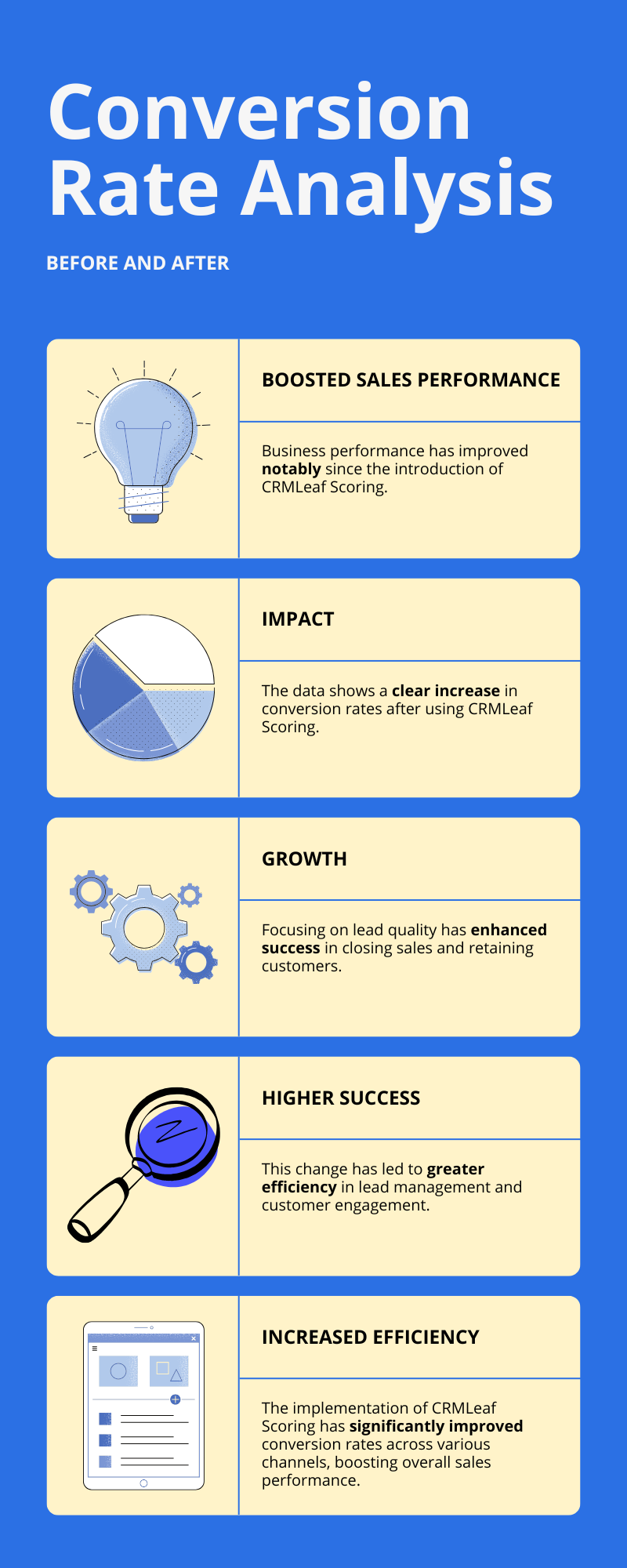
Best Practices to Build a High-ROI Lead Scoring Model
Step 1: Define Your Ideal Customer Profile (ICP)
Before you can score leads, you need a clear picture of who your best customers are.
- Why it matters: A scoring model based on your top customers ensures that you attract and prioritize similar high-value prospects.
- How to do it: Analyze your most profitable clients using human resource management software or CRM systems and identify traits like job role, company size, and industry.
Pro tip: CRMLeaf allows you to tag existing customer employee profiles, set scoring benchmarks, and build smarter targeting strategies.
Step 2: Set Scoring Criteria Based on Two Dimensions
Demographic or Firmographic Criteria
- Job Title: Leads in decision-making roles (CEOs, HR Managers, CFOs) who are shopping for best HR software or easy payroll for small business should score higher.
- Company Size: Companies that require payroll processing companies or have compliance needs often convert at a higher rate.
- Industry Fit: Whether it’s for customer relationship management, payroll services for one employee, or document management system integration, tailor your scores to your niche.
- Location: Leads searching “payroll services near me” often have high purchase intent and can be prioritized for quicker follow-up.
Behavioral Criteria
- Website Behavior: Repeated visits to pricing or service pages (e.g., cost of payroll services for small business) signal buying intent.
- Email Engagement: Opening emails related to the best payroll service or online payroll services shows engagement and readiness.
- Content Downloads: Brochures, HR guides, or whitepapers on human resource management systems suggest active evaluation.
- Form Submissions: A request for a CRM + ERP demo or pricing sheet for online payroll services should be given high value.
CRMLeaf’s scoring engine auto-assigns points to each activity and syncs that data across modules like document management and payroll services.
Step 3: Assign Point Values & Set Thresholds
Assign specific point values to each criterion, creating a scoring framework that is both quantitative and consistent.
Example Scoring Breakdown:
- Job Title = +15
- Downloaded Guide on customer relationship management software = +10
- Opened 3+ Emails = +5
- Visited “best customer relationship management software” page = +15
- Unsubscribed from Emails = -10
Once a lead crosses your sales qualification threshold (e.g., 60 points), CRMLeaf will auto-assign a task or notify your rep to follow up.
Step 4: Automate with CRM + ERP
Manual scoring wastes time. CRMLeaf’s intelligent automation ensures that human resource software, attendance software, and CRM systems work together for efficient lead management.
- Centralize lead activity and sync across HR, sales, and finance using built-in document management system features.
- Use ERP integrations to consider financial fit (especially useful for prospects evaluating payroll services for small business or the cost of payroll services).
- Auto-trigger follow-ups and lead nurturing flows for qualified leads.
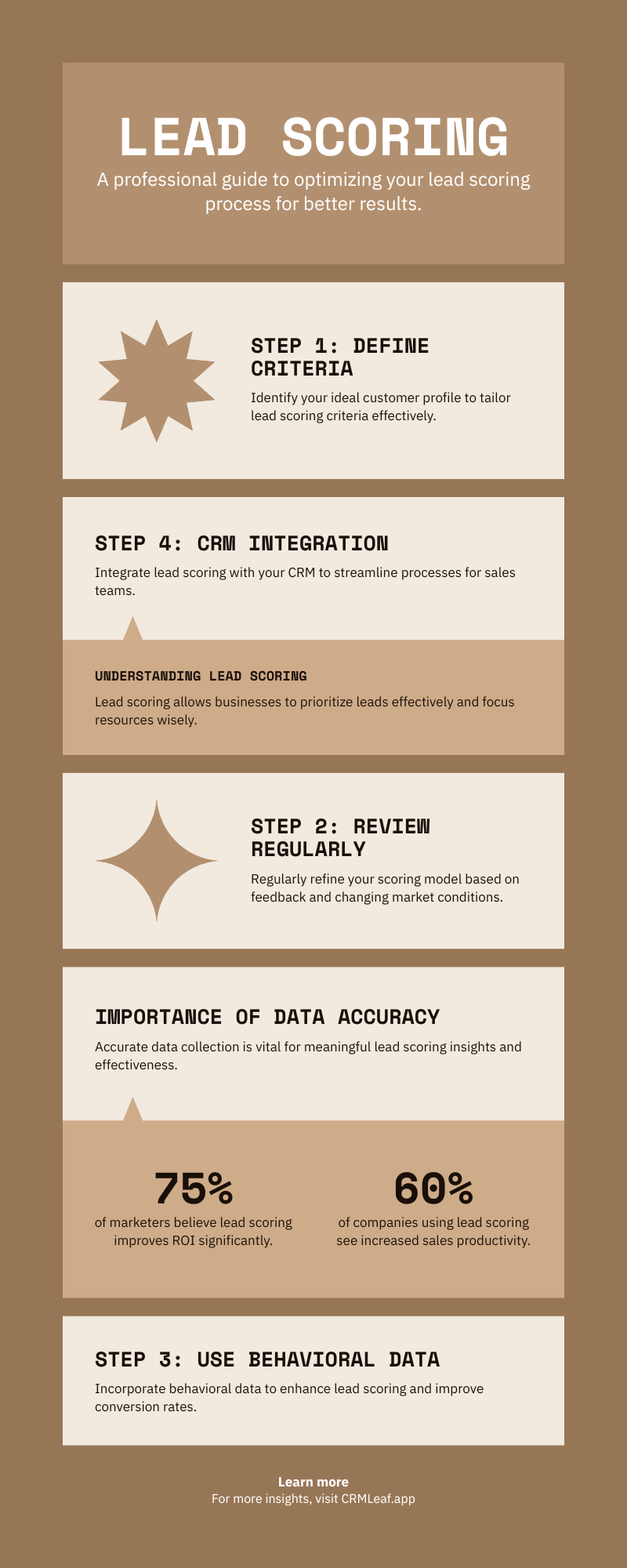
Step 5: Review and Optimize Regularly
The market changes — so should your scoring model.
- Audit quarterly: Review closed-won deals and their lead scores. Were they scored correctly?
- Add new criteria: Track trends like engagement with pages on best customer relationship management software or searches related to “payroll services for one employee.”
- Adjust weights: Lower points for behaviors that no longer signal high intent (e.g., newsletter signups) and raise points for new high-intent actions like downloads of legal document management software checklists.
Customer Success Snapshot
Case Study: TalentSync — A Fast-Growing HR Tech Startup
Challenge: Their sales team wasted 30% of time on low-quality leads. They also had no visibility into leads evaluating payroll services for small businesses.
Solution: They implemented CRMLeaf’s scoring model and integrated it with online payroll services, employee profile tracking, and CRM systems.
Results:
- 28% increase in conversion rate
- Sales cycle reduced by 18 days
- More alignment between HR, sales, and finance using document management and CRMLeaf’s scoring engine
Key Takeaways
Lead scoring is more than a sales tool — it’s the bridge between strategy and ROI.
- Define your Ideal Customer Profile using insights from CRMLeaf and your human resource management system.
- Use both demographic and behavioral data for smarter scoring.
- Automate scoring and workflows with integrated tools like all in one HR software, CRM, and payroll services.
- Continuously refine your model by tracking patterns and high-converting behaviors.
With CRMLeaf, you get more than just a customer relationship management platform — you get a complete business growth engine.
Ready to Score Smarter and Grow Faster?
